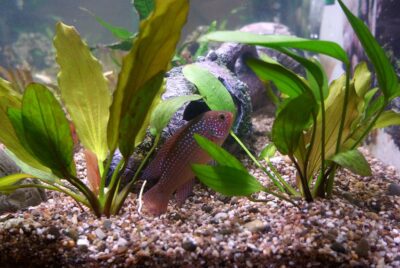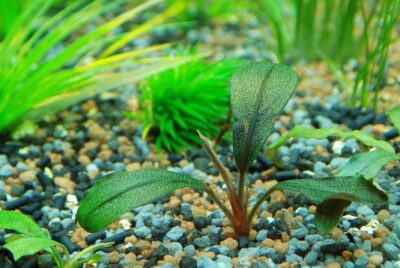Aquarium Plants Turning Brown
Aquariums have a unique way of bringing tranquility into our homes. They can transform any space into a vibrant underwater world. But, what happens when the green plants that add life to your aquarium start to turn brown? As a natural part of the underwater ecosystem, plants play a significant role in an aquarium. They not only contribute to the aesthetic appeal but also help in maintaining the water conditions. However, maintaining the health of these aquatic plants can sometimes pose a challenge, especially when they begin turning brown. So, let’s take a deep dive into the issue of aquarium plants turning brown and explore how to bring them back to life.
Understanding Why Aquarium Plants Turn Brown
Aquarium plants can turn brown for a variety of reasons. The key to bringing them back to their vibrant green state is first to understand the cause behind the browning. Here are some common reasons that might be causing your aquarium plants to turn brown.
Nutrient Deficiency
Aquatic plants, like their terrestrial counterparts, need a variety of nutrients to thrive. These include macronutrients such as magnesium, nitrogen, potassium, and phosphorus. When these nutrients are lacking in the water, the plants can exhibit signs of deficiency, which include browning of the leaves.
Insufficient Light
Aquatic plants need the right amount of light to photosynthesize and grow. Inadequate lighting can lead to browning of the leaves as the plants are unable to produce the necessary energy for growth. Too much light can also be harmful and cause the leaves to brown and wilt.
Improper Planting
The way you plant your greenery can also contribute to their health. Each plant species has unique requirements for planting and care. If planted incorrectly, the leaves may turn brown. Learning about the overall care of a planted freshwater aquarium could give you insights into how to plant properly.
Unclean Tank Water
The quality of your tank water can directly impact the health of your plants. An excess of fish waste and pollutants can lead to an overload of nitrates and toxins, making it difficult for the plants to thrive and causing them to turn brown. Regularly cleaning your aquarium plants can significantly improve the quality of your tank water.
Difficulty in Adapting to the New Environment
Sometimes, the browning of the plants is a result of them trying to adapt to their new underwater environment. This is especially true for plants that were grown above water and are transitioning to underwater growth.
Remember: Knowing the cause of the browning is the first step in treating your plants and bringing them back to their green, healthy state.
Revitalizing Brown Aquarium Plants – (Aquarium Plants Turning Brown)
Once you’ve identified the cause of your aquarium plants turning brown, the next step is to take measures to treat them. Here are some tips on how to get your aquarium plants green and healthy again.
Planting Correctly
Proper planting plays a crucial role in the health of your aquatic plants. Ensure that your substrate isn’t clumped together and is adequately settled in your tank. Research on the specific planting needs of your plant species and follow them carefully.
Regulating Lighting Levels – (Aquarium Plants Turning Brown)
Ensure your plant is getting the right amount of light. If your current lighting setup isn’t sufficient, consider investing in a more robust system. The goal is to provide the right level of light, not too much and not too little. For more details on aquarium lighting, visit the National Aquarium website.
Adding Fertilizer or CO2 – (Aquarium Plants Turning Brown)
Nutrient deficiency can be combated by adding a suitable fertilizer to your tank. However, be careful not to over-fertilize as this can also cause browning. If your plant is still not looking healthy, consider injecting CO2 into your tank.
Maintaining Clean Tank Water
Keeping your tank water clean is essential for the health of both your fish and plants. Consider investing in a good filter and regularly clean your tank to maintain ideal water conditions.
Adjusting Water Conditions
If your water conditions are not ideal for your plant, consider adjusting them. The temperature, pH level, and other factors can significantly impact the health of your plants.
Checking Aquarium Devices
Ensure that all your aquarium devices are working correctly. Faulty equipment can lead to a change in tank conditions and negatively impact plant growth.
Performing Regular Water Changes
If all else fails, consider performing a water change. This can help reduce waste levels, get rid of contaminants, and restore your plant’s health.
Keeping Your Aquarium Plants Healthy – (Aquarium Plants Turning Brown)
The best way to deal with brown aquarium plants is to prevent them from turning brown in the first place. Here are some precautions you can take to keep your aquatic plants healthy and vibrant.
Regularly Check Water Quality
Regularly check the quality of your tank water. This includes keeping an eye on the pH, water hardness, and ammonia levels.
Choose the Right Substrate
The substrate you choose plays a significant role in the health of your plants. Choose a substrate that is rich in the nutrients your plants need to thrive.
Provide Adequate Lighting
Ensure your plants are getting the right amount of light. Research your specific plant species to determine what level of light they need and adjust your lighting setup accordingly.
Regular Tank Maintenance
Regular tank maintenance is vital for the overall health of your aquarium. This includes regular water changes, cleaning the glass of your tank, and removing any debris.
Adjust Tank Conditions as Necessary
The conditions in your tank can significantly impact the health of your plants. Make sure that the temperature, pH level, and other factors are appropriate for your specific plant species.
Ensure Proper Functioning of Tank Devices
Ensure that all your tank devices are functioning correctly. A malfunctioning filter or heater can quickly change your tank conditions and negatively impact the health of your plants.
Conclusion – (Aquarium Plants Turning Brown)
In conclusion, dealing with aquarium plants turning brown can be a challenging task. However, with the right knowledge and care, you can bring your plants back to a healthy state. Remember, the key to maintaining healthy aquarium plants lies in understanding their specific needs and providing them with a suitable environment. By carefully monitoring your water conditions, providing adequate lighting, and ensuring they have the necessary nutrients, you can keep your plants vibrant and healthy.
Frequently Asked Questions – (Aquarium Plants Turning Brown)
Q: Why are my aquarium plants turning brown?
A: Aquarium plants can turn brown due to a variety of reasons such as nutrient deficiency, insufficient light, improper planting, unclean tank water, and difficulty in adapting to the new environment.
Q: Can brown aquarium plants turn green again?
A: Yes, with the right treatment and care, brown aquarium plants can turn green again. The first step is to identify the cause of the browning, then adjust your tank conditions or care routine accordingly.
Q: What type of fertilizer should I use for my aquarium plants?
A: he type of fertilizer you use depends on the specific needs of your plants. Different plants require different nutrients to thrive. It is always best to research the specific needs of your plants or seek advice from experts. A good starting point could be to check recommendations on forums like Aquatic Plant Central.
Q: Can brown aquarium plants harm my fish?
A: Brown aquarium plants themselves won’t harm your fish. However, the conditions that caused the plants to turn brown could potentially harm your fish. For instance, unclean water can lead to disease in fish.
Q: Can I prevent my aquarium plants from turning brown?
A: While it may not be possible to prevent all instances of aquarium plants turning brown, regular maintenance and care can significantly reduce the risk. This includes regularly checking water conditions, providing adequate lighting, and ensuring your plants have the necessary nutrients.




